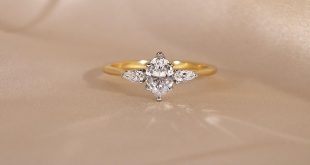In the quote above, legendary English playwright William Shakespeare raised an age-old question, ‘What is in a name?’ In the luxury fashion branding scene, the name in other words the ‘brand name’, is everything. This is because it is the ‘brand name’ and the ‘brand logo’ that attracts consumers to a brand and launches the often enduring relationship between them and their chosen luxury brand
Shakespeare indicated that if a rose were to be known by another name, it would still smell as sweet. Does the same principle apply to the luxury fashion sector? Would brands like Louis Vuitton and Giorgio Armani have the same associative elements and success if the names of their founders were different? The answers to these questions will become clear as we take a trip down the history lane to the origins of branding and the evolution of the global luxury fashion sector.
Branding evolution
The notion of branding as part of ancient trading can be traced to the Greek and Roman empires, before the modern industrial revolution. During this period, market awareness was created through carving out shop route signs and product descriptions, in stone along footpaths.
This method progressed on to the early sixteenth century when whisky distillers began to ship their products in wooden barrels with the name of the producer burned into them. The sole purpose of this method was to differentiate the maker of each type of whisky from his competitors and to aid consumers in identifying the original products from cheaper substitutes.
Origins of luxury fashion
The history of luxury fashion is similar to that of branding in terms of development from ancient to modern times. Fashion’s history has, however, been written about extensively by those more qualified than myself to do so; therefore its repetition is not the purpose of this chapter. However, there are key periods, events and circumstances that led to the evolution of modern luxury branding, which are worth recounting. For example, events following the industrial revolution brought about mass production techniques and led the way for the current prêt-a-porter fashion.
Also, the dissolution of the world’s monarchies, aristocracy and social class systems brought a change in luxury fashion, notably after the First World War. These factors show an important link between fashion and mankind’s history and social evolution
Early civilization fashion
The concept of beauty and its association with human beings can be traced to the Christian Bible, when Eve, the first woman created by God according to Christian beliefs, placed a flower over her ear to make herself more beautiful and attractive to Adam, the first man. The Bible also provides other historical accounts of the lavish consumption of luxury materials like gold, silver and myrrh during the times of King David, King Solomon and the Queen of Sheba, particularly between 1010 BC and beyond 100 BC. These give evidence of the early appreciation of the notion of luxury and beauty by man.
From Egypt to Crete and Greece
he Cretan period also known as the Bronze Age was the first real period of European civilization and the fore era that influenced European fashion and lifestyle. Crete was the centre of bronze and ceramics production and exports and its structured system and emphasis on development ultimately influenced the fashion of the time. As time progressed and the society developed, fashion also developed. Researchers have found indications of permissive half-male nudity, where people working in production sites could wear only shorts. For the 16luxury fashion branding women, who played traditional home-making roles, the story was a bit different.
 Pagal World
Pagal World



